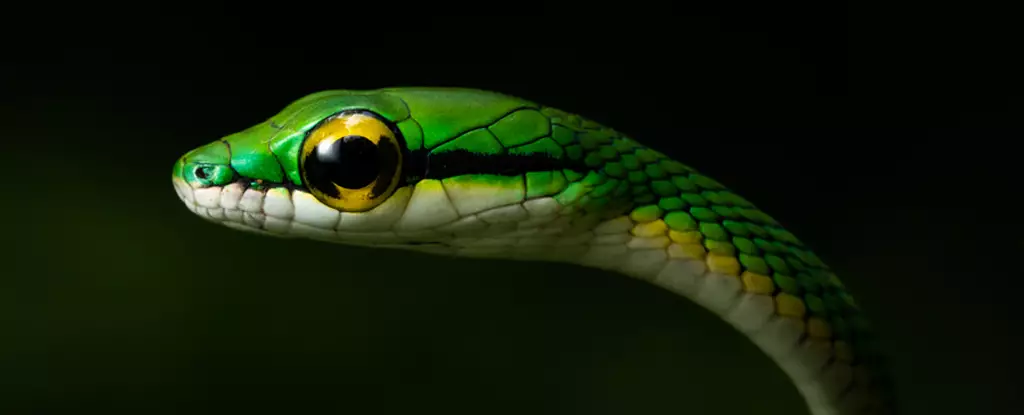Snakes, with their limbless bodies and unique form of locomotion, have captured the fascination of biologists for centuries. The sudden burst of snake diversity roughly 128 million years ago marked a significant turning point in the evolutionary history of reptiles. While many lizard species also exhibit limblessness, snakes have outpaced them in terms of diversity and success. Researchers, including evolutionary macroecologists from Stony Brook University, have delved into the genetics and diets of thousands of specimens to unravel the secrets behind the triumph of snakes.
The findings of the study shed light on the rapid evolution of snakes compared to lizards. Through genetic analysis of over 1,000 species, it was revealed that snakes have been evolving at a much faster pace, allowing them to exploit new ecological niches successfully. The flexibility of their skulls enables them to swallow prey much larger than themselves, while their advanced chemical detection system aids in tracking down potential meals. This evolutionary leap has played a crucial role in the widespread distribution of snakes across different habitats worldwide.
The ability of snakes to adapt and thrive in various environments has been exemplified by their survival through significant events like the asteroid impact that wiped out non-avian dinosaurs. While other species struggled to cope with the changing landscape, snakes possessed the genetic diversity necessary to rapidly adapt and seize new opportunities. From burrowing underground to residing in freshwater ecosystems, snakes have demonstrated their versatility and resilience as a group.
Despite the remarkable success of snakes, the underlying genetic mechanisms driving their rapid evolution remain a mystery. The concept of macroevolutionary singularities, where unforeseen combinations of traits converge to propel a species forward, could offer some insight into the extraordinary diversity of snakes. Similar phenomena, such as the sudden emergence of flowering plants, provide a broader context for understanding the intricate evolutionary processes at play.
The sheer ecological diversity exhibited by snakes sets them apart from other reptiles. With species occupying almost every habitat on Earth, snakes have proven to be masters of adaptation. While some lizards share certain behaviors with snakes, the latter’s dominance across a wide range of environments signifies their unparalleled evolutionary success. The intricate interplay between genetics, anatomy, and ecology has paved the way for snakes to establish themselves as one of the most diverse and fascinating groups of animals on the planet.
The evolutionary journey of snakes offers a glimpse into the complex and dynamic nature of life on Earth. By unraveling the genetic underpinnings of their success, researchers have uncovered a tapestry of adaptation and innovation that continues to shape the evolutionary trajectory of snakes. As we delve deeper into the realms of genomics and evolutionary biology, the story of snakes serves as a compelling reminder of nature’s boundless creativity and resilience.


Leave a Reply